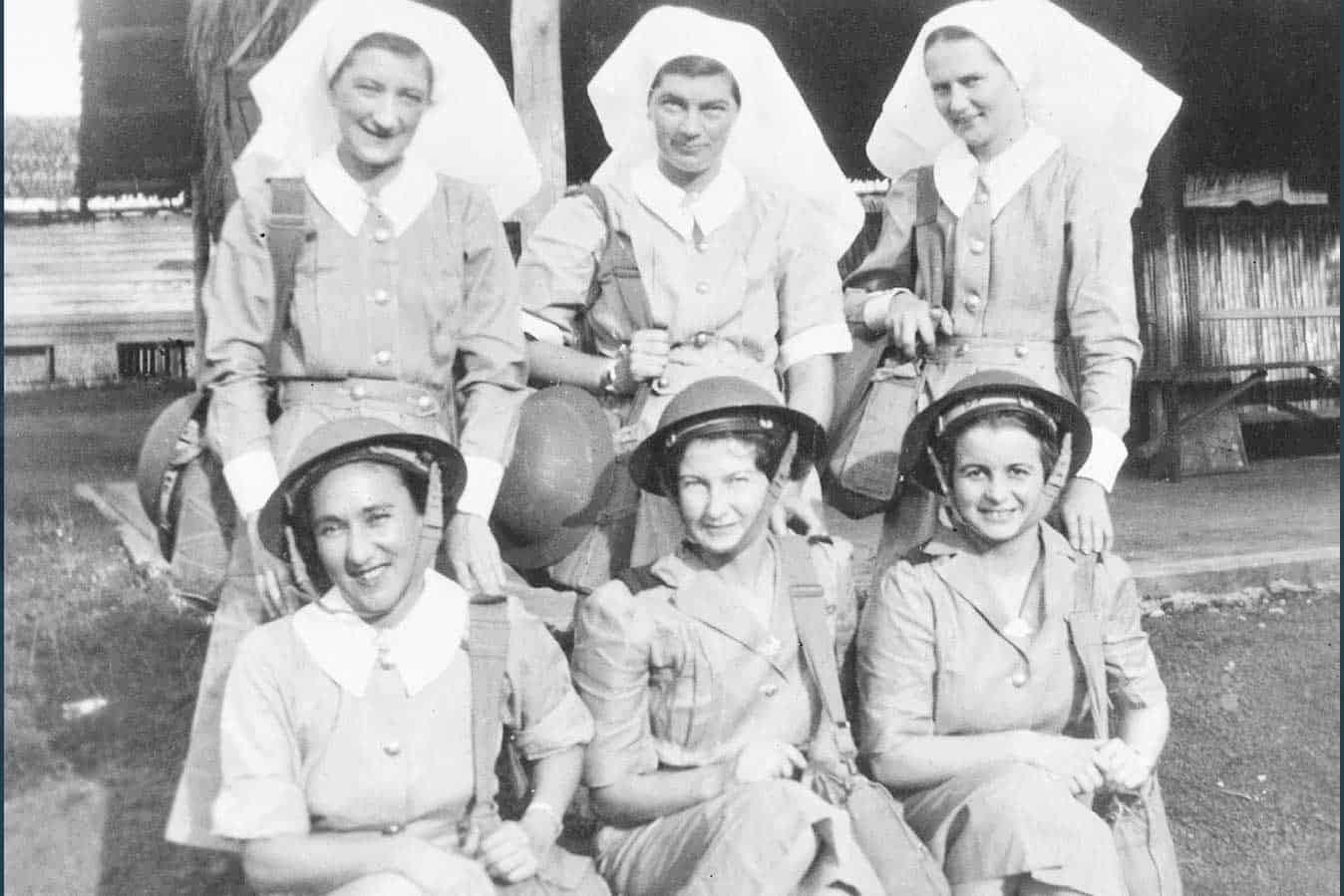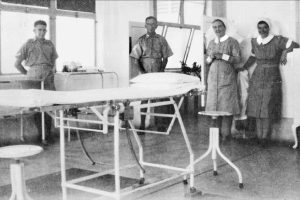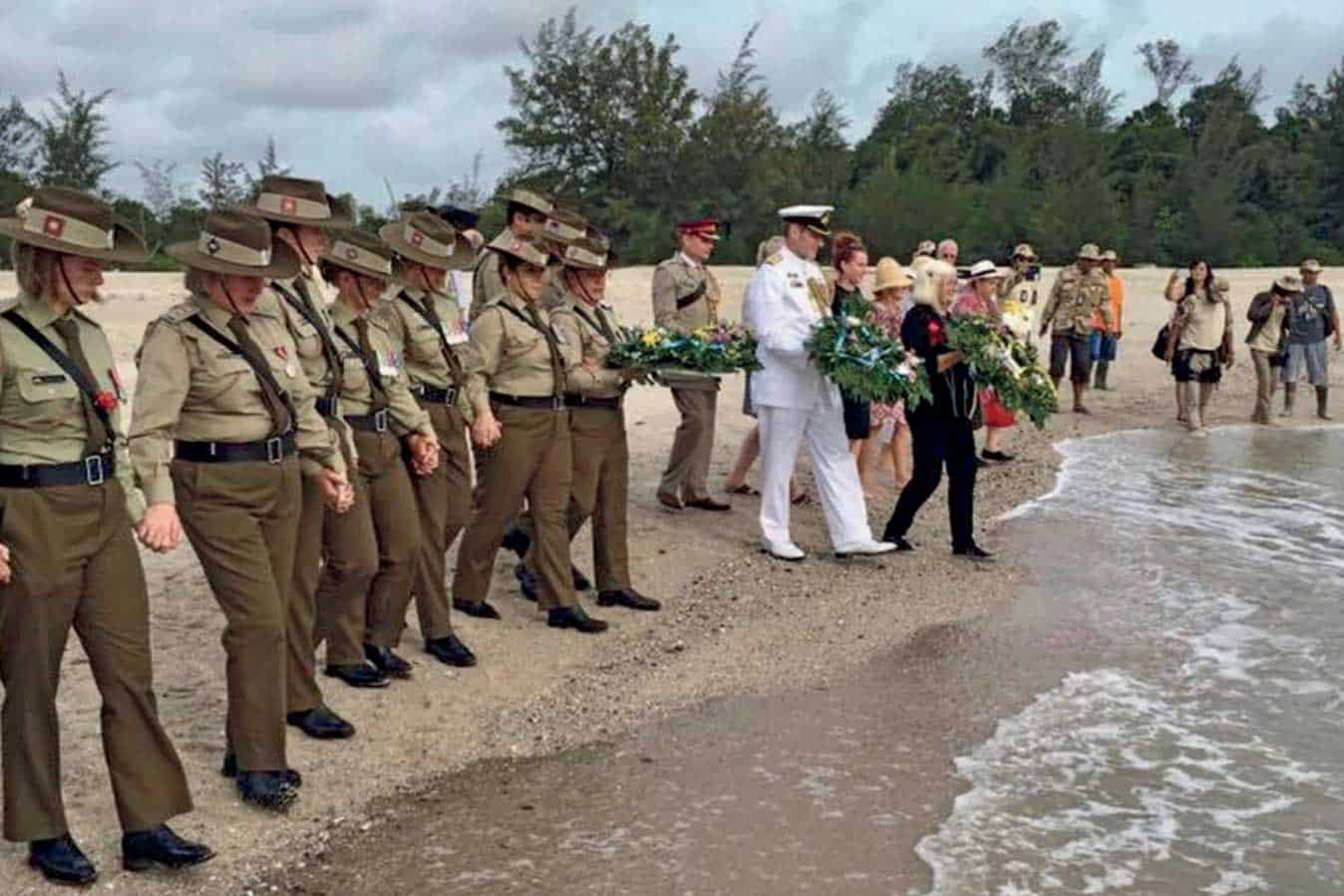Australian Army nurse Bud Elmes was excited, describing “the opportunity of a lifetime” being in Malaya, to her friends and family back home – only months before her brutal death in the waters off Radji Beach during WWII in one of the worst wartime massacres in history.
Melbourne writer Georgina Banks’ search for the truth of what happened to her great-aunt, nursing sister Dorothy Gwendoline Howard Elmes – known to her family as Bud or Benda – on that fateful day, has culminated in her book Back to Bangka: Searching for the truth about a wartime massacre.

On 14 February 1942, 22 Australian nurses, survivors of the sinking of the SS Vyner Brooke by the Japanese, washed ashore on Bangka Island in Indonesia.
On 16 February, after surrendering, they were ordered to walk into the sea, where they were machine-gunned from behind. Only one survived – Lieutenant Colonel Vivian Bullwinkel AO who later this year will be commemorated with the unveiling of a statue at the Australian War Memorial.
Ms Banks’ journey started when she was invited to attend a 75th anniversary memorial service for those who lost their lives at Radji Beach in 1942.
“I knew very little of the national history buried in my family – no one in my family ever spoke about my great aunt Bud. My grandmother, Bud’s older sister, had lost her husband by drowning in the Yarra River so there was double grief in the family – which they never talked about,” she says.
Her father, a Navy Vietnam Veteran didn’t want to “open old wounds” and Sally, her aunt, aged 72, and suffering the effects of a car accident from many years earlier, told Ms Banks “you go in my place” to the memorial. So Ms Banks made the “special pilgrimage” with her husband’s sister, Amanda, a palliative care nurse studying grief counselling. She could not have predicted it would ignite a five-year journey to retrace Bud’s steps including deep in the archives back in Australia.

“I was so excited to be going to the memorial, I had no idea how terrible it was. It left me with so many unanswered questions.”
Georgina’s grandmother Jean, was Bud’s only and older sibling. It was only on Jean’s deathbed that she passed on to Sally, Georgina’s aunt, letters written by Bud and a photo of her in army uniform, kept in a rattan box. These included letters to nursing colleagues back home, written while she was deployed in Malaya before the fighting started in the Pacific.
Bud Elmes nursed at Corowa Hospital, a small country hospital in NSW. Banks describes her great-aunt as “feisty” with a “kooky” sense of humour as she got to know her through letters to her nursing colleagues who she called “the old hounds”, including to her friend nurse ‘Smithy’ who wasn’t of age to sign up. The requirement to join the army was that you needed to be 25-35 years and unmarried, although an exception was made for matrons.
Back to Bangka weaves three threads: the dramatised account of Bud’s last 48 hours, Bud’s letters home from Malaya and Singapore, and Banks’ own story grappling to uncover the truth.
“I wanted to honour my great aunt by telling the true story not the sanitised version. I wanted to speak up for my great aunt on the brutality of what was inflicted on her by the Japanese Imperial Forces,” Ms Banks says.
No-one was ever held to account for the atrocities on Bangka Island because the Commander of the Battalion that committed these war crimes suicided the night before he was to be tried at the war crimes tribunal. Many of the soldiers involved in the massacre died while fighting in Papua New Guinea.

Vivian Bullwinkel bravely testified before the Tokyo War Crimes Tribunal in 1946, stating: “When we were thigh deep in the surf, they opened up a murderous fire, mowing us down like a scene I saw in a film as a child. The women around me shrieked, stiffened, and sank. I was hit here, in the left side, under the ribs, falling unconscious in the water.”
In 2017, around the 75th anniversary of the massacre, writer and broadcaster Tess Lawrence published an article revealing that Sister Bullwinkel had disclosed to her that most of the nurses had been “violated” before they were gunned down. She said she had been told by the Australian government not to put this in her statement before the war crimes tribunal in 1946.
“Of course we cannot know 100% what happened that day – there is no direct evidence all these years later but there is compelling circumstantial evidence. The statements given as part of the war crimes investigation by those who walked the beach in the days after and witnessed the aftermath of the massacre do not add up with the official version, there is significant variation. What I can say is that the evidence of wounds inflicted on those nurses indicates that the scene was more violent and chaotic,” says Ms Banks.
Banks says in writing the book, she grappled with the sensitivities around protecting grieving families from further harm.
“Is it more merciful to speak up or to stay silent? I’m sympathetic to both but I can’t have both. For me, seeing justice for my great aunt is by having an accurate historical account of what happened. If we do not acknowledge the truth, it stays in the shadows.

Banks says she has the support of the majority of the relatives of nurses she knows, who died on the beach. Back to Bangka throws a spotlight on women in wartime – in their vulnerability and profound strength, she says.
“All nations have committed atrocities in war. But soldiers must have a moral compass and even under the fog of war, a responsibility under the Geneva Convention.”
Having written the book and visited where Bud grew up, Ms Banks says she has made peace with the past. Whilst the journey and process opened up difficult conversations within the family, it had also enabled healing.
“I went to Cheshunt in the beautiful King Valley and visited Bud’s old house which was on a couple of acres. It was a healing landscape. I had come to associate Bud with dying and trauma and grief. But she was a sporty, physical woman, with a wry smile – who was passionate about nursing and I could imagine her striding about the farm, rabbiting with her shotgun and swimming in the King River.”

The ANMJ is giving away 10 copies of Back to Bangka: Searching for the truth about a wartime massacre. Be one of the first to email and we will send you the book in the mail. Email: anmjadmin@anmf.org.au










One Response
“What motivated the woman in the article to embark on a journey back to Bangka, and what discoveries or truths did she uncover during her quest?”